Contributor: Jacob Adler
Work and Life is a radio program hosted by Stew Friedman, director of the Wharton Work/Life Integration Project, on Sirius XM’s Channel 111, Business Radio Powered by Wharton. Every Tuesday at 7 pm EST, Stew speaks with everyday people and the world’s leading experts about creating harmony among work, home, community, and the private self (mind, body, and spirit).
Joel Brockner is the Phillip Hettleman Professor of Business at Columbia University Business School and author of The Process Matters: Engaging and Equipping People for Success and a leading authority on a variety of psychological issues in the workplace, including managing change, leadership, decision-making, and cross-cultural differences in work behavior. He spoke with Stew Friedman about how to engage employees.
The following are edited excerpts of their conversation.
Stewart Friedman: Our society, our business world, is driven by measurable outcomes, data, and results. Now we’ve got the horserace of an election and the analysis and meta-analysis that’s happening around that. You’ve done decades of really important research on decision-making and most recently, about the process by which decisions get made, the fairness inherent in that. Why do you pursue that and why does it matter to us?
Joel Brockner: 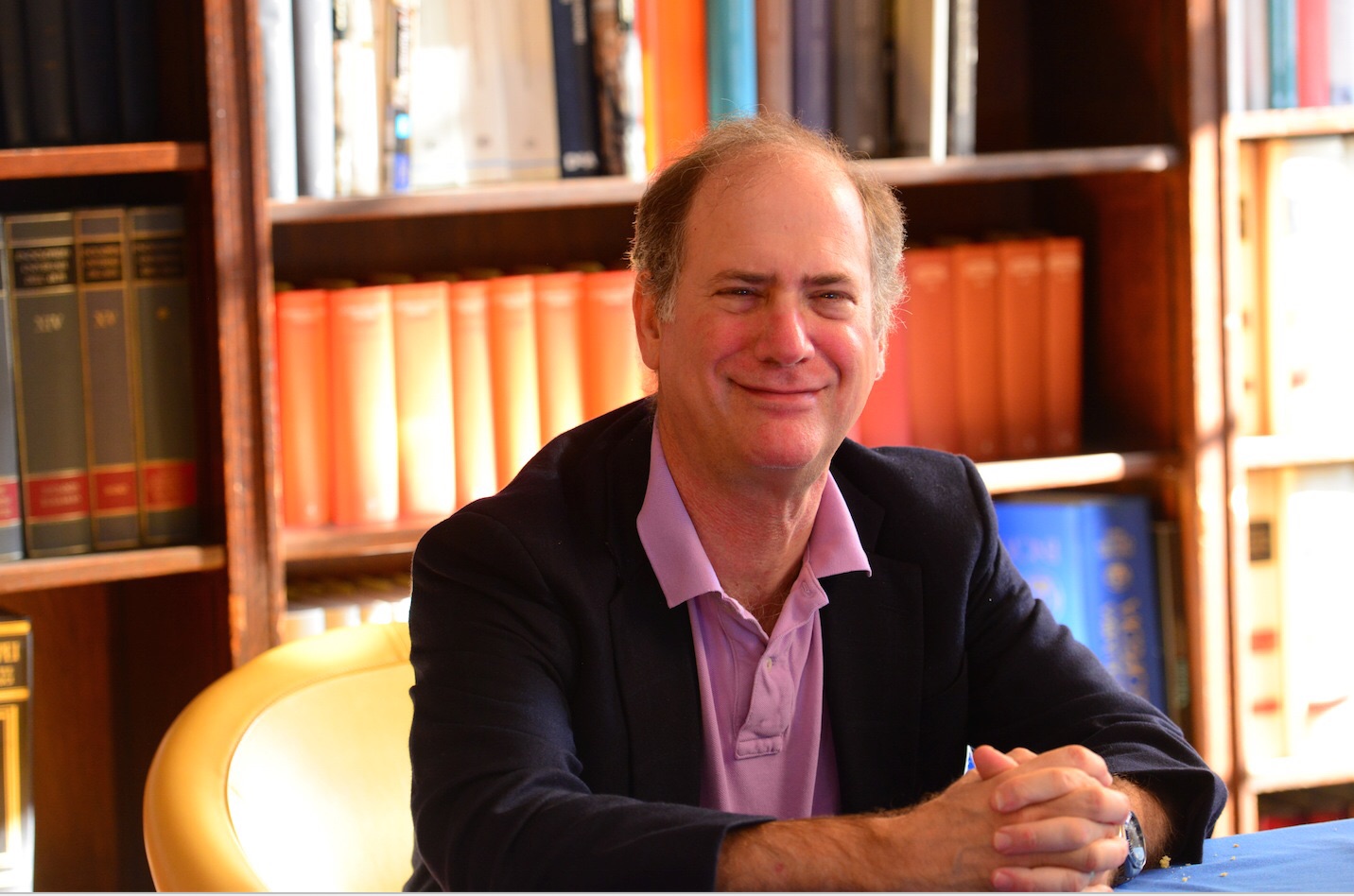 That’s a great question, because we hear a lot about how the outcome matters. We live in a results-oriented society; you hear expressions like the bottom line. I love good outcomes, I’d rather win than lose, but my basic argument is that if you want your organization to be sustainably successful you have to care about outcomes but you also have to care about the process through which you arrive at that outcome. In the long term we need to get there and we need to get there in the right way. I always get nervous when managers say to their people I don’t care how you get there, just get there. They’re giving people liberty to do things in the way that they see fit, but it’s also a potentially dangerous statement, because among other things it might invite unethical behavior.
That’s a great question, because we hear a lot about how the outcome matters. We live in a results-oriented society; you hear expressions like the bottom line. I love good outcomes, I’d rather win than lose, but my basic argument is that if you want your organization to be sustainably successful you have to care about outcomes but you also have to care about the process through which you arrive at that outcome. In the long term we need to get there and we need to get there in the right way. I always get nervous when managers say to their people I don’t care how you get there, just get there. They’re giving people liberty to do things in the way that they see fit, but it’s also a potentially dangerous statement, because among other things it might invite unethical behavior.
SF: There have to be some limits and restraints on behavior because we know that to be really clear on the ends and flexible on the means for achieving them is a recipe for engagement and motivation of teams and employees. We want to give people freedom but you’re suggesting that there’s a right way and wrong way to do that?
JB: I’m suggesting that the expression I don’t care how you get there, just get there can be taken too far, in which case people don’t pay attention to the way in which they get there. Doing things in a fair and humane way, there are a couple ways to talk about the process, what do we mean by a high-quality process.
SF: Yes, please define that for us.
JB: Partly it has to do with what I would call attributes of the process, so, for instance, if the process is fair. A lot of things go into a fair process: are people allowed to participate in decisions, were the reasons for decisions explained to them, were the decisions based on accurate information, was it transparent, was it a level playing field?
SF: Those are the crucial ones, whether people are able to provide input, whether they understand the rationale for decisions, if decisions were made on the basis of accurate information, and that there was a level playing field. What you mean by “level playing field?”
JB: Everybody has an equal chance for being successful, the same standards are being applied to everyone. The principle is known as consistency.
SF: So those are the elements that produce a fair process?
JB: Yes, and there are other ways to talk about a process being done well besides fairness. We can focus on not so much attributes of the process, but how it makes people feel. A process is a good one, for example, if people on the receiving end felt like their sense of esteem was bolstered, or it affirmed their identity, or gave them a sense of control. Those experiences that we have that are very motivational so that if a process is done in a way that enables us to feel in those ways, then that’s also a high-quality process.
SF: We know that all of those translate into positive outcomes in other domains of life by way of spillover, so if you know that people have a sense of esteem at work, and this has been traditionally more true for fathers than mothers, their kids do better. If your dad is feeling good about himself and his role at work, he’s going to be a better father. That probably doesn’t surprise you.
JB: That would make perfect sense. To give an example, what I meant by a process that affords people a sense of esteem, a typical way that companies will bring people in, the on-boarding process as it’s called, you might say to the new employee this is what we stand for, these are our values, this is what we’re good at, and this is why you should be happy to be here as a new member of our organization. That’s all well and good but a recent study suggested that if at the time that people are brought in, if they’re given an extra hour to just articulate what they are good at, what are their signature strengths and how they would imagine enacting those things on the job, not that people are given license to do anything they want, but at least their views are being seriously considered. The study shows that extra hour showed six months later higher customer satisfaction and a lot less turnover. This was in an organization with a lot of turnover and they found it fell dramatically. Just by spending an extra hour during that socialization process, they enabled people to feel a sense of esteem or affirm their sense of identity and it had huge positive payoffs months later.
SF: So when we talk about the process we’re talking about a sense of fairness, we’re talking about how the decision and the way things are make people feel in terms of their esteem, their sense of control over their lives, and their identity and by that you mean what exactly?
JB: It allows them to feel that the decision process recognized them for who they were. Again, this idea of identifying your signature strengths. A strength speaks to your esteem — it’s what you’re good at — but a signature strength is something that you in particular are really good at. It affirms your sense of identity as well as affirms your sense of esteem.
SF: Important in that element of how people feel as a result of the process is being seen as a unique individual that has a particular value and differentiated from the value that other people bring.
JB: That’s why I say it’s not simply a function of attributes of the process, like fairness of the process, it’s however they’re doing it, are they doing it in a way that allows people to have these psychological experiences, which make people feel good about themselves but it also makes them more productive, more satisfied with their jobs and as you implied with the whole purpose of your show, it allows for an overall better life experience.
SF: If you feel good about yourself, and you feel valued as an individual contributing in a unique way, and have a sense of control over the things that happen to you, all of those aspects of a work experience are going to spill over in a positive way to the other parts of your life. We focus a lot on the show about creating work arrangements that enable flexibility and control. I wonder if you could speak to how your model of understanding the importance of the process by which decisions get made, how it speaks to listeners who are looking for some guidance on how to negotiate a more flexible work arrangement that would allow them to be successful not just at work but in the other parts of their lives?
JB: There is interesting work by one of your colleagues at Wharton, Adam Grant, of the study on what’s called job crafting. The basic idea here is that you have a job description but people are allowed to take up their jobs in a variety of ways – the extent that you can be given input into what gets done or how things get done or when things get done. You’re allowed to craft the contours of your job, and that’s one of these experiences that allows people to have this experience of esteem and identity because you’re given control, you’re allowed to have input in how things are going to get done. The other thing is if people are given some license about their work arrangements, they’re probably going to be bringing more of themselves into it, so that’s the identity aspect of it. Sometimes, a little bit can go a long way. It doesn’t require organizations to change things all that dramatically in terms of time, money, and all those other kinds of resources. Sometimes just making small tweaks in how things are done can allow people to have these experiences of esteem, identity, or control and as a result have much better work experiences. More productivity, more morale, all sorts of good things.
SF: And it doesn’t cost a lot. We’re talking about small changes that can have a really big impact – having people feel better about themselves, uniquely contributing to some larger goal, and feeling a greater sense of control, and how important that is in bringing the whole self to work, which is what we’re trying to help people understand how to do. Can you give an example of how that has played out, in your own experience or what you have seen?
JB: It’s not just in the workplace, it’s in other kinds of organizations as well. There was a famous study done a number of years ago with residents of a nursing home, again this is the idea of how a little bit can go a long way. It was a very simple study, the staff was trying to do right by everybody there and in one group they were given a little bit more control. One group was told here’s a plant, and we’d like you to care for the plant. You have to water it, make sure it gets enough light. We’re not talking about a big responsibility, but it was more the symbolism of it all. They were given some responsibility. Another example would be they were told you’re going to be able to watch a movie one night this week. I want you to select the night of the week you want to view it; Tuesday, Wednesday, Thursday, it’s your call. The other group was given the same plant and the staff said you don’t need to do a thing, we’ll take care of it for you. In terms of that movie, we’ll decide. You don’t need to exert the effort to figure out what night to watch the movie; we’ll do that for you. There were very small differences, and when you followed those two groups for weeks and months afterwards, they found that the people who were given more control were more alert, more physically active and in better health, and actually there was some evidence that over the long haul, a couple year period, the death rate was lower. Small things can go a long way in work organizations and other kinds of organizations.
SF: One of the points you make in your book is that there are tons of solutions out there that don’t cost a lot and these are good examples. Can you say more about the importance of opening up your frame of mind as a manager to those low-cost solutions that can have a big impact on your people?
JB: You hit the nail on the head. Managers need to be more open-minded. We understand that they’re busy, we understand they’re operating in a constrained environment. Sometimes it’s not so simple, sometimes it’s a bigger intervention that is needed, but sometimes even those bigger interventions will pay for themselves, so it’s a little bit of pay-now-or-pay-later. I’ll give you an example. I oftentimes speak to groups at Columbia Executive Education programs and other places, private clients as well, and I’ll be talking about change management. The book also talks a lot about what we mean by well-managed change process, and lots of people have written about this. We’re talking about managing change, there’s a fair amount that goes into handling that process well. I’ll oftentimes lay those things out to managers whom I’m working with and they’ll say this works out on paper but we don’t have time for this and they’re quite right. It does take time to explain why and involve people in decision-making and to train them for new behaviors and perhaps give them some advance notice and plan things. It really does take a fair amount of time, this is not one of those small tweaks.
SF: Some investment is required in a good process.
JB: What I often hear when I say why don’t you do more of this is that they don’t have time for it. My answer to that is with all due respect, it does take time, but if you don’t do these things well now, you’re going to create a bigger mess for yourself in terms of people being resistant, dragging their feet, and not being on board with the change effort. Tell me, do you think you’re going to have the time later to correct things to remedy things that you didn’t do right in the first place? I would say, Stew, that it’s not so much a matter of pay-now-or-pay-later, I think the expression that comes close to it is an ounce of prevention and a pound of cure. Let me put it this way: you’re going to have to do a lot more later to do the process well if you don’t do it right in the first place.
SF: Because the process matters in terms of motivation, engagement? You’ve been asserting, and I know based on evidence and common sense that when you engage with people, when you make them feel good about how decisions are getting done that they’re going to feel better, but what do we know, if you could sum up the essence of the research evidence, how indeed that does ultimately affect organizational, group, team, and perhaps family and community outcomes?
JB: It’s not simply about making people feel good. It’s about bottom-line productivity. Productivity is the bottom line for organizational psychologists. When people are engaged with the change process, an organization needed to downsize for example, or needed to grow, whatever the change happens to be, to the extent that they are embracing the change, engaged with saying things like this is great, we should have done this a long time ago. That’s not just about making them feel good, although that’s certainly a good byproduct. That means they’re more on board, they’re working on behalf of organizational goals and the importance of that is immeasurable.
SF: What are some of the other obstacles you have people telling you? What should people and managers know in terms of the obstacles they might face in improving their decision-making process and how to improve them?
JB: It’s sort of a puzzle. If we know this, how come we don’t do it? One answer is that sometimes it’s not as obvious as it might seem. The small-tweaks-can-go-a-long-way sometimes is not so obvious. Sometimes it’s a knowledge gap. That’s why I think, not just plugging my book but reading others’ studies like other books and articles similar to the point, I think helps managers be more informed and they have a richer understanding of just how much the process matters. Sometimes it’s a matter of what I call skill, the interpersonal skill needed to pull things off. A number of years ago, I was doing a presentation at an organization that was downsizing for the very first time and the pain in the room was palpable. I could feel everybody’s pain and I hung in there and tried to give them some guidance, but I could understand how the urge people have to hide when others around them are feeling depressed or angry or anxious. You want to hide sometimes to cope yourself, and that’s the worst thing that managers could do, when they feel that temptation to run away, when they need to make themselves more accessible, but that’s hard. It’s risky and you have to have the courage to stand up and make yourself available to tell someone that you’re very sorry but you’re going to have to lay them off. That’s one of the really difficult challenges for managers. To have the emotional intelligence or social skill to pull that off gracefully is not easy, and that’s another obstacle. We have lack of time, sometimes the lack of knowledge, sometimes the lack of interpersonal skill needed to pull these difficult processes off, and then sometimes there are other factors or motivational reasons. It’s not a matter of I can’t do it, I don’t want to do it. For example, oftentimes you have to allow people to have input into decisions. Some people would say if I give them input, then they have more power and I’m reducing my own power.
SF: One might be reluctant to engage employees in providing input on a decision.
JB: It could be philosophical or it could be this view of a win/lose, zero-sum view. The more authority I give to others, the less authority I have for myself.
SF: In your book, what can readers find to help them, both managers as well as employees, to produce a better process in the decisions that they are facing?
JB: The essence of it is we’ll give ideas about what goes into a quality process. We’ll talk about the obstacles. There are also a bunch of inventories in the appendix of the book that allow people to assess themselves about where they come out on the very factors that we’ve been talking about throughout the book. I always encourage readers to turn to Appendix C, for example, to look at how good you are as an agent of change. Well, here are a bunch of process dimensions and fill out this instrument and see where you come out. Even better, get other people to rate you on the very same dimensions and you’ll have a more informed view of not only what makes for a healthy process, but where you come out on those dimensions.
SF: And that, of course, can form your development and growth as a leader, as an employee, perhaps as a father, brother, friend in being able to produce outcomes that are better for the process by which they were achieved.
About the Author
Jacob Adler , W’18, is a sophomore at Wharton and a contributor at The Daily Pennsylvanian, numberFire, and Fake Teams.
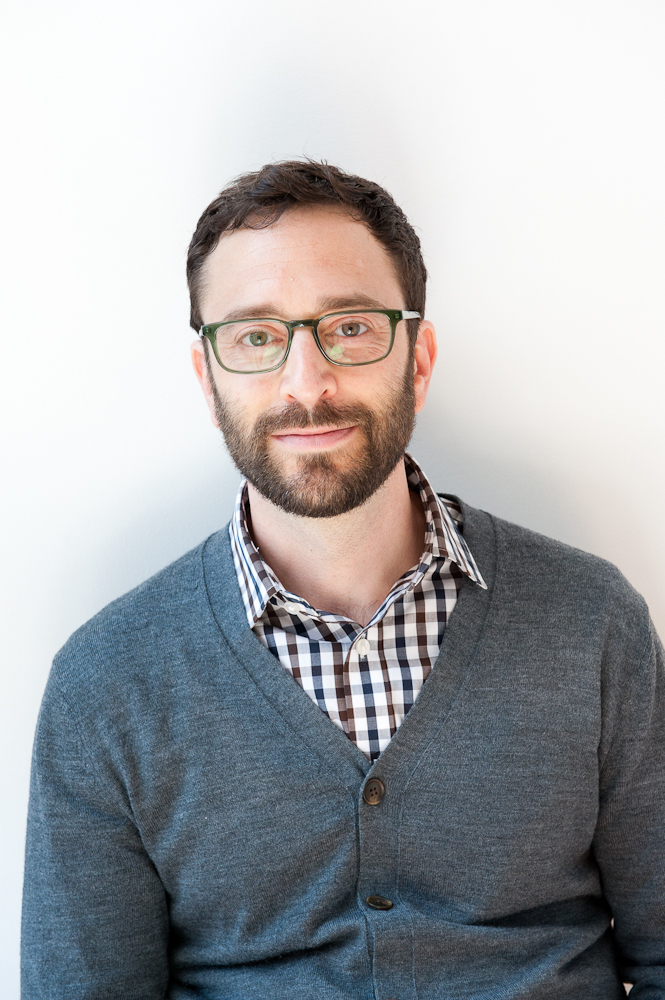 It’s actually not the field in which I did my doctoral work, that would be area called social cognitive neuroscience. This is the study of the social contexts that we put ourselves in, the ways that we talk to each other, the ways that we use language, the ways that we talk to ourselves that can really influence actual brain function, can influence the emotions and influence whether we’re beating ourselves up or whether we’re working with ourselves most effectively. There’s a lot of flexibility we have in regulating emotions that comes from research in neurolinguistics, research in other branches of psychology, other branches of neuroscience.
It’s actually not the field in which I did my doctoral work, that would be area called social cognitive neuroscience. This is the study of the social contexts that we put ourselves in, the ways that we talk to each other, the ways that we use language, the ways that we talk to ourselves that can really influence actual brain function, can influence the emotions and influence whether we’re beating ourselves up or whether we’re working with ourselves most effectively. There’s a lot of flexibility we have in regulating emotions that comes from research in neurolinguistics, research in other branches of psychology, other branches of neuroscience.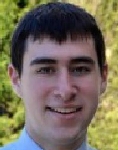 W’18, is a sophomore at Wharton and contributor at The Daily Pennsylvanian, numberFire, and Fake Teams.”
W’18, is a sophomore at Wharton and contributor at The Daily Pennsylvanian, numberFire, and Fake Teams.”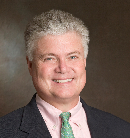 I often ask, ‘do you have true ADD or a severe case of modern life?’ Five to ten percent of the population has true ADD or ADHD. I would say 75 to 80% have a severe case of modern life or what I call, attention deficit trait, ADT. That’s not an inborn condition. If you have true ADD, you are born with it. ADT is induced by modern life – the busyness of modern life. In many ways, the great thing of modern life is you can do so much. But the curse of modern life is you can do so much.
I often ask, ‘do you have true ADD or a severe case of modern life?’ Five to ten percent of the population has true ADD or ADHD. I would say 75 to 80% have a severe case of modern life or what I call, attention deficit trait, ADT. That’s not an inborn condition. If you have true ADD, you are born with it. ADT is induced by modern life – the busyness of modern life. In many ways, the great thing of modern life is you can do so much. But the curse of modern life is you can do so much.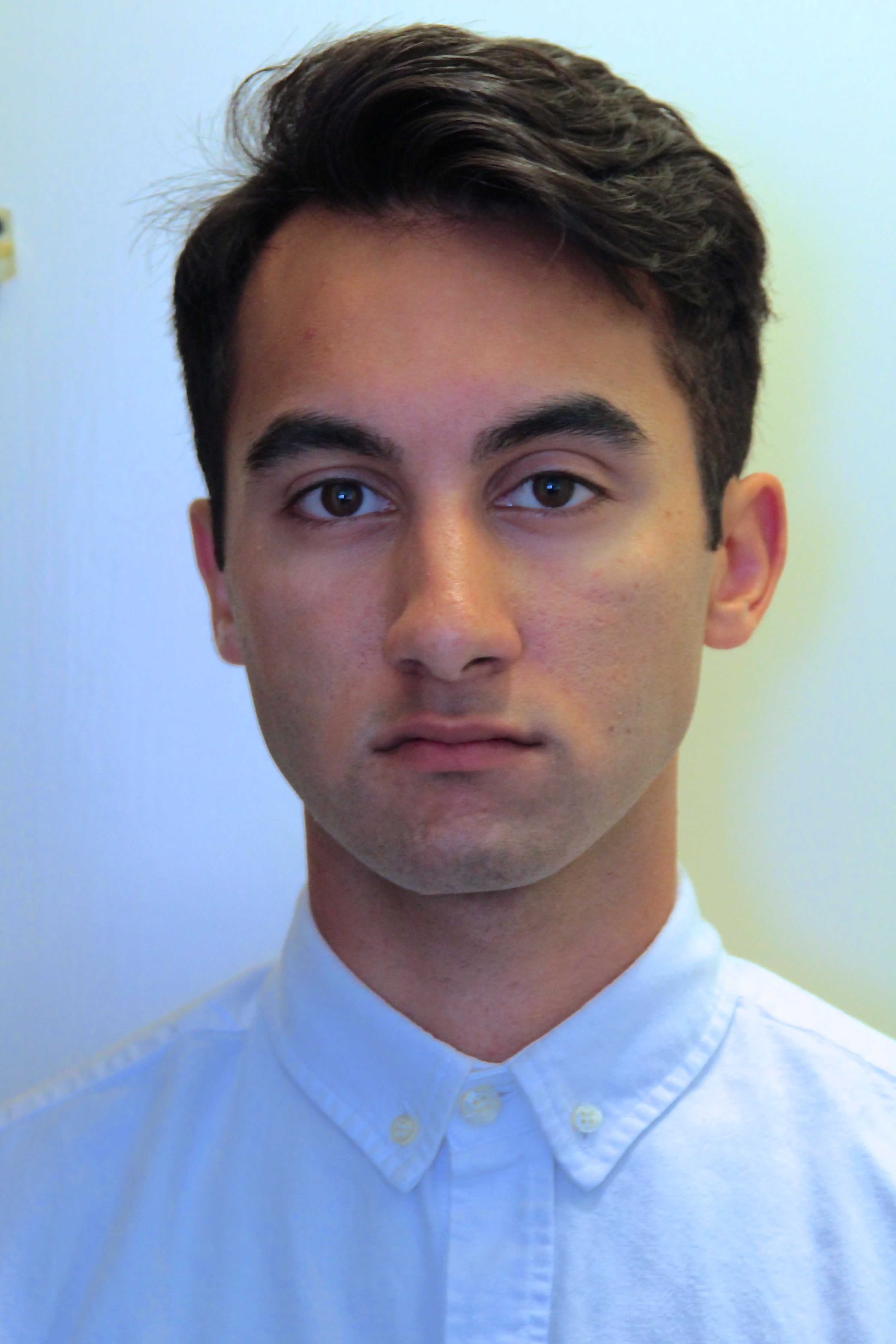 Singh is an undergraduate junior at the Wharton School.
Singh is an undergraduate junior at the Wharton School. You actually get some of the credit for that spark. I took your Total Leadership class. I was already working on upping my brain and I recognized that I was obese. I had already lost a lot of weight before I met you. I lost half the weight that I wanted to lose. It was interesting to understand that I needed to get my brain working right in order to get the spiritual and emotional things that we are capable of when we are performing really well. And what happened when I was in your Total Leadership class is that you encouraged a type of quantification, a measurement. I was focusing on my weight, how much was I eating, my IQ, my reaction time, and what I could do for those variables. But I never looked at investment return on the time and energy that I put into things. And it was your framework that said “if you’re spending a lot of energy in a particular area and you’re not getting results, maybe you shouldn’t do that.” And that made me start looking at how can I make this easier instead of just how can I get this done. It is that sense of ease and ability to not just do it with struggle and striving and just working really hard but to do it with a little bit of effortlessness and joy. That has become a big part of me becoming successful as a human being and bio-hacker.
You actually get some of the credit for that spark. I took your Total Leadership class. I was already working on upping my brain and I recognized that I was obese. I had already lost a lot of weight before I met you. I lost half the weight that I wanted to lose. It was interesting to understand that I needed to get my brain working right in order to get the spiritual and emotional things that we are capable of when we are performing really well. And what happened when I was in your Total Leadership class is that you encouraged a type of quantification, a measurement. I was focusing on my weight, how much was I eating, my IQ, my reaction time, and what I could do for those variables. But I never looked at investment return on the time and energy that I put into things. And it was your framework that said “if you’re spending a lot of energy in a particular area and you’re not getting results, maybe you shouldn’t do that.” And that made me start looking at how can I make this easier instead of just how can I get this done. It is that sense of ease and ability to not just do it with struggle and striving and just working really hard but to do it with a little bit of effortlessness and joy. That has become a big part of me becoming successful as a human being and bio-hacker. Folks were working really long hours and would not take time off from work on the weekends. When looking at senior leaders in an organization, they seemed dead. It was as if their souls had left their bodies. Looking back at that, it was a sign of extreme burnout, fatigue, and overwork. As I sat there with my first position out of college — wanting to be successful and climb the corporate ladder — I looked at the senior leaders and realized ‘I don’t want that.’ There had to be a better way to serve, add value, and contribute to an organization without burning myself and my team out. So how could I start to simplify and help folks be more productive without the expense of self?
Folks were working really long hours and would not take time off from work on the weekends. When looking at senior leaders in an organization, they seemed dead. It was as if their souls had left their bodies. Looking back at that, it was a sign of extreme burnout, fatigue, and overwork. As I sat there with my first position out of college — wanting to be successful and climb the corporate ladder — I looked at the senior leaders and realized ‘I don’t want that.’ There had to be a better way to serve, add value, and contribute to an organization without burning myself and my team out. So how could I start to simplify and help folks be more productive without the expense of self?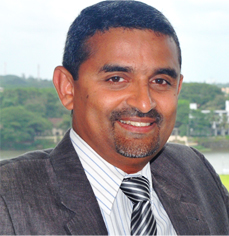 It was risky, but I think I planned the change really well; it was possible because I had the global exposure. I could work with anyone around the world, I already had global expertise. I had proven myself in three different continents, and I could fly out at any time to perform my job and then fly back to live in my little village.
It was risky, but I think I planned the change really well; it was possible because I had the global exposure. I could work with anyone around the world, I already had global expertise. I had proven myself in three different continents, and I could fly out at any time to perform my job and then fly back to live in my little village. is an undergraduate freshman in the Vagelos Program in the Life Sciences and Management at the University of Pennsylvania.
is an undergraduate freshman in the Vagelos Program in the Life Sciences and Management at the University of Pennsylvania. Making deadlines, avoiding distractions, focusing; these all require self-control. Self-control is linked with higher I.Q and with greater productivity. Also having self-control effects health and being healthy means you can perform better at work
Making deadlines, avoiding distractions, focusing; these all require self-control. Self-control is linked with higher I.Q and with greater productivity. Also having self-control effects health and being healthy means you can perform better at work Several colleagues and I were talking about how much we loved our work and how meaningful it was, but also that it’s the type of job that is never ending; there’s always something to be done. We wondered how we could avoid burnout, but still be on the cutting edge. What we’ve found is that people thrive in their work when they feel energized, have vitality, feel alive at work, and feel as though their learning, growing, getting better.
Several colleagues and I were talking about how much we loved our work and how meaningful it was, but also that it’s the type of job that is never ending; there’s always something to be done. We wondered how we could avoid burnout, but still be on the cutting edge. What we’ve found is that people thrive in their work when they feel energized, have vitality, feel alive at work, and feel as though their learning, growing, getting better.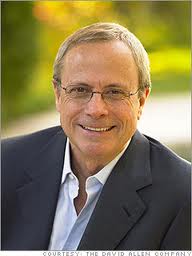 The one sentence version is both very simple and practical and pretty sublime. It is: You need to pay appropriate attention to what has your attention; otherwise, it will take more of your attention than it deserves. What has your attention? How many things are on your mind? “I need to get cat food.” “I need to find God.” “I need a career.” “I need to talk to my aunt.” “I need to answer those ten emails.” If you don’t handle those things appropriately, you are inappropriately engaged with your email, with your cat, when you are at work, or with your family. Here’s the big secret: getting things done is not about getting things done. It’s about being appropriately engaged with your life. I figured out the algorithm for being appropriately engaged. There are five steps. First, you have to capture the idea, identify what’s on your mind and record it; do something to get it out of your head. Second, decide what it means to you and what you’re going to do about it. Third, park the results of that decision somewhere you’ll see them at the right time. Fourth, look at the results of those decisions – the things you need to get done – when you need to get them done. And fifth, engage appropriately with doing those things. It isn’t rocket science, but it is something most people haven’t yet truly implemented.
The one sentence version is both very simple and practical and pretty sublime. It is: You need to pay appropriate attention to what has your attention; otherwise, it will take more of your attention than it deserves. What has your attention? How many things are on your mind? “I need to get cat food.” “I need to find God.” “I need a career.” “I need to talk to my aunt.” “I need to answer those ten emails.” If you don’t handle those things appropriately, you are inappropriately engaged with your email, with your cat, when you are at work, or with your family. Here’s the big secret: getting things done is not about getting things done. It’s about being appropriately engaged with your life. I figured out the algorithm for being appropriately engaged. There are five steps. First, you have to capture the idea, identify what’s on your mind and record it; do something to get it out of your head. Second, decide what it means to you and what you’re going to do about it. Third, park the results of that decision somewhere you’ll see them at the right time. Fourth, look at the results of those decisions – the things you need to get done – when you need to get them done. And fifth, engage appropriately with doing those things. It isn’t rocket science, but it is something most people haven’t yet truly implemented. received her MBA from The Wharton School in 2014
received her MBA from The Wharton School in 2014